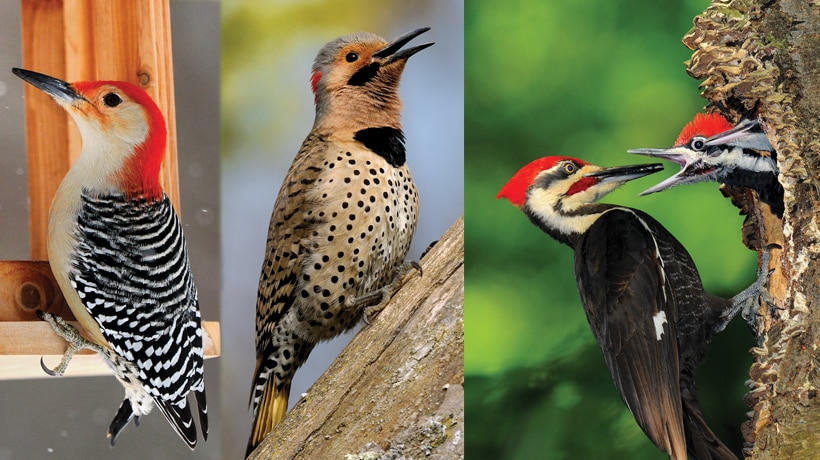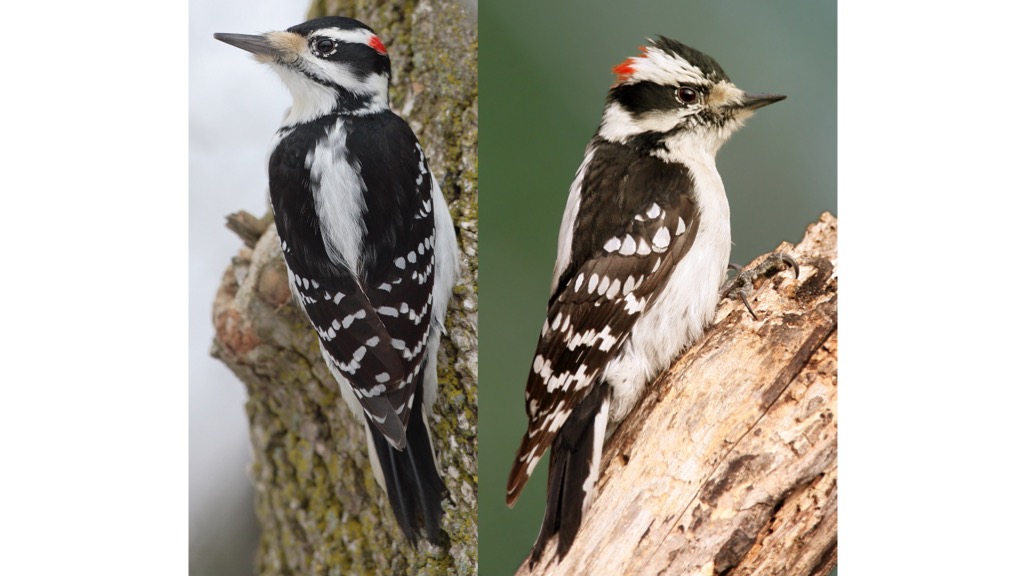Encountering Woodpeckers in Florida: Variety Diversity and Recognition
Wiki Article
Introducing the Secrets of Woodpeckers: Habits, Environment, and Much More
Woodpeckers, with their one-of-a-kind behaviors and specialized adaptations, have actually lengthy captivated researchers and nature fanatics alike. These remarkable birds possess a variety of fascinating keys that lost light on their survival strategies, habitat preferences, and complex interaction approaches. By revealing the mysteries surrounding woodpeckers' habits and habitat options, a much deeper understanding of these bird marvels arises, offering a glimpse into their remarkable globe. What makes these birds really exceptional, and exactly how do they browse their environment with such accuracy and skill? Allow's check out the fascinating world of woodpeckers and unravel the enigmatic details that make them such interesting subjects of study.Woodpecker Actions Insights
In taking a look at woodpecker behavior, a remarkable display of specialized abilities and adaptations arises, shedding light on their exceptional ecological niche. Woodpeckers, understood for their distinctive drumming on trees, possess a selection of behavioral attributes that contribute to their survival and success in their atmosphere.Furthermore, woodpeckers display an one-of-a-kind feeding habits identified by their capacity to extract bugs from tree bark utilizing their specialized beaks. Their long, barbed tongues aid in catching prey, while their solid neck muscles supply stability and precision throughout pecking motions. This feeding strategy allows woodpeckers to access surprise insect larvae and remove them with impressive performance.
Environment Preferences and Selection
What aspects affect the habitat preferences and option of woodpeckers? Woodpeckers are very adaptable birds understood to populate numerous environments worldwide. They do exhibit preferences for specific environment features. One essential element influencing woodpecker environment choice is the schedule of appropriate nesting sites. Woodpeckers normally prefer forests with a mix of mature trees that provide sufficient opportunities for cavity excavation. These tooth cavities act as important nesting and roosting sites for woodpeckers and are necessary for their reproducing success.Furthermore, woodpeckers show a choice for habitats with an abundant supply of food resources. They are largely insectivorous, preying on beetles, ants, larvae, and various other pests located in rotting wood or tree bark. Therefore, woodpeckers often tend to prefer wooded areas with a varied insect population to fulfill their nutritional requirements.
In addition, the existence of dead or decaying trees is an additional crucial consider woodpecker environment choice. These trees not just offer food resources however additionally use suitable substratum for tooth cavity excavation. Dead trees are essential for the upkeep of healthy woodpecker populaces, as they play an important duty in the woodpeckers' life cycle and community characteristics.
Feeding Practices and Diet Regimen Structure
Woodpeckers show a specialized feeding habits concentrated on foraging for insects within numerous habitats. Their diet plan largely contains pests such as beetles, ants, caterpillars, and spiders, which they locate by touching on tree bark and listening for the noise of movement inside. Woodpeckers use their solid beaks to drill into the timber and their long, barbed tongues to my response draw out target from crevices. In addition to insects, woodpeckers additionally take in tree sap, fruits, nuts, and seeds, including variety to their diet plan depending on the season and accessibility of food resources.The foraging methods of woodpeckers are well-adapted to their arboreal way of life. Woodpeckers play an important role in keeping the wellness of forests by controlling insect populaces and aiding in the decomposition of timber.
Drumming Seems and Communication
Making use of fast drumming sounds on numerous surfaces, woodpeckers employ a distinct type of interaction to indicate territory boundaries and attract companions. This drumming behavior is not only a method of interaction however also works as a method for woodpeckers to develop their existence within a particular location. The strength, speed, and pattern of the drumming can convey crucial information to various other woodpeckers around.Woodpeckers make use of drumming sounds to introduce their existence in a region and to caution off possible trespassers. The loud and recurring nature of the drumming serves as a clear signal to other woodpeckers that the location is already asserted. This helps in lowering conflicts and decreasing physical conflicts in between people.

Survival Adaptations and Specialized Anatomy

Final Thought
To conclude, woodpeckers show special habits, such as drumming sounds for interaction, and have specialized anatomy for survival in their picked habitats. Their feeding habits and diet regimen composition further show their versatility to numerous atmospheres. By understanding these facets of woodpeckers, researchers and conservationists can much better safeguard and preserve these interesting birds and their environments.Report this wiki page